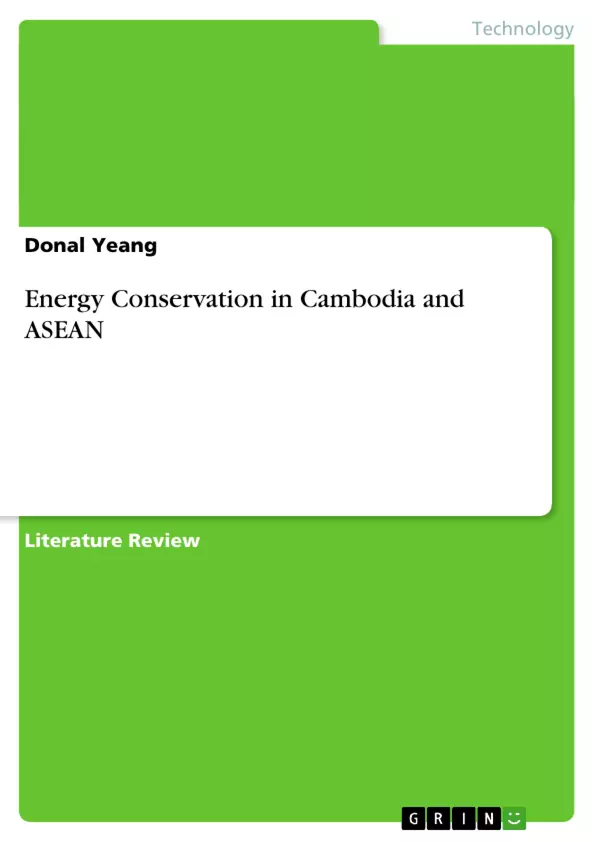Cambodia's power supply facilities were heavily damaged by war and its rehabilitation were made under the support from the World Bank, ADB, Japan, USA and European Countries. At present, the electricity supply in Cambodia is fragmented into 24 isolated power systems centred in provincial towns and cities. All are fully reliant on diesel power stations. Per capita consumption is only about 48 kWh /year and less than 15% of households have access to electricity (urban 53.6%, rural 8.6%) and the amount of electricity consumption is as follows: Private sector 0.5%, Service sector 40%, Industrial sector 14%. The supply requirements are projected to increase in average by 12.1% per year, and the peak load is expected to reach up to 1 000 MW in 2020.
An effective energy policy is considered by the government to be critical to Cambodia’s future economic and industrial development and to improving the standard of living of its citizens. At present, only between 5% and 10% of Cambodia’s population has access to networked power and the government is strongly committed to significantly increasing the percentage of its citizens to have access to the electricity distribution network. Around 76% of the 10,452 villages of Cambodia will still be without electricity in the year 2010. The government has set a target of 70% of households to access to electricity by 2030. However, Cambodia does also need a
structured and comprehensive energy strategy that can address energy conservation needs.
Inhaltsverzeichnis (Table of Contents)
- 1. Geography
- 2. Socio-economic Situation
- 3. Energy Sector in Cambodia
- Table 1: Hydropower generation candidates in Cambodia
- 4. Cambodia Energy Policy
Zielsetzung und Themenschwerpunkte (Objectives and Key Themes)
This report provides a comprehensive overview of energy conservation in Cambodia and its broader implications within the context of the ASEAN region. It explores the current state of Cambodia's energy sector, highlighting the challenges and opportunities presented by the country's socio-economic landscape. The report also delves into the government's energy policies and their impact on sustainable development.
- Cambodia's Geography and Socio-economic Context
- Energy Sector Overview and Challenges
- Renewable Energy Potential and Development
- Cambodia's Energy Policies and Strategic Objectives
- The Role of Energy Conservation in Addressing Global Warming
Zusammenfassung der Kapitel (Chapter Summaries)
The first chapter provides a geographical overview of Cambodia, highlighting its location, physical landscape, climate, and demographics. The second chapter delves into Cambodia's socio-economic situation, focusing on population dynamics, economic growth, and key sectors like agriculture, tourism, and mining. Chapter 3 focuses on the energy sector in Cambodia, outlining its current state, energy sources, and major challenges. The chapter also examines the potential of renewable energy resources, including hydropower, biomass, solar, and wind energy, for sustainable development. Finally, chapter 4 examines the government's energy policies, outlining their objectives, strategies, and efforts to promote energy conservation and increase access to electricity.
Schlüsselwörter (Keywords)
The report focuses on key concepts such as energy conservation, sustainable development, renewable energy sources, hydropower, biomass, solar energy, and wind energy. It also examines the role of government policy in promoting energy efficiency and addressing the challenge of global warming within the context of ASEAN.
- Quote paper
- Donal Yeang (Author), 2011, Energy Conservation in Cambodia and ASEAN, Munich, GRIN Verlag, https://www.grin.com/document/170883



